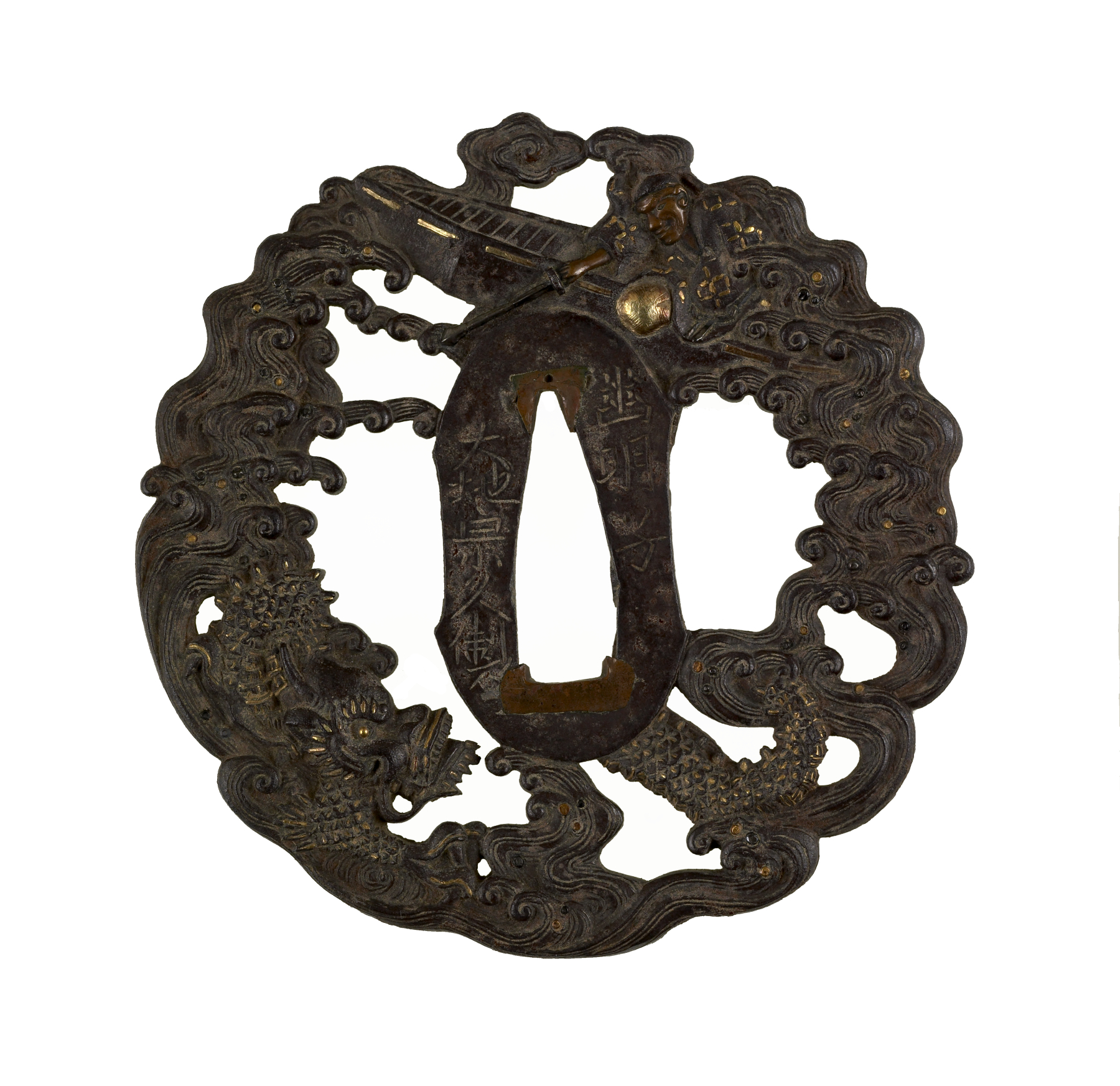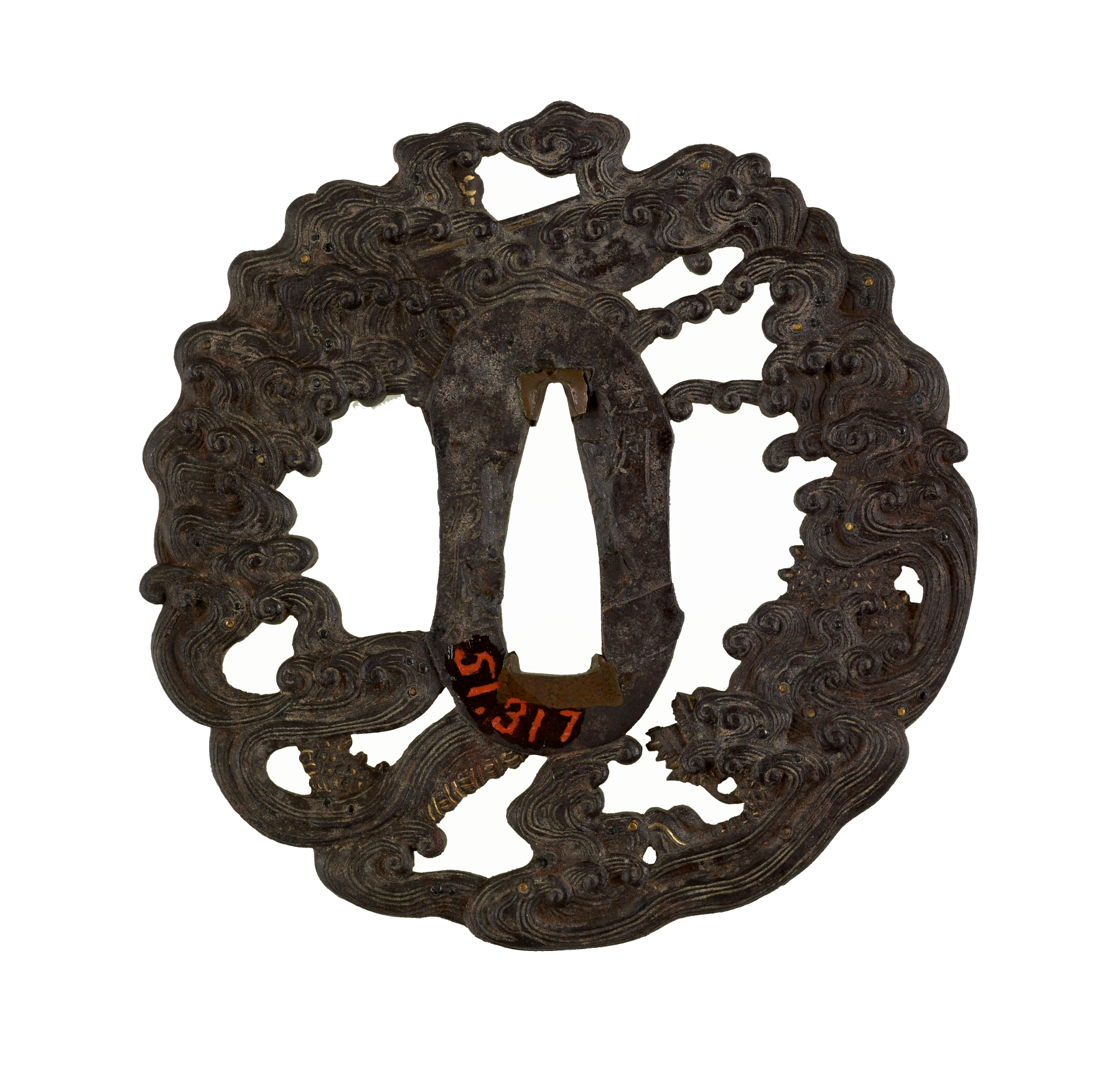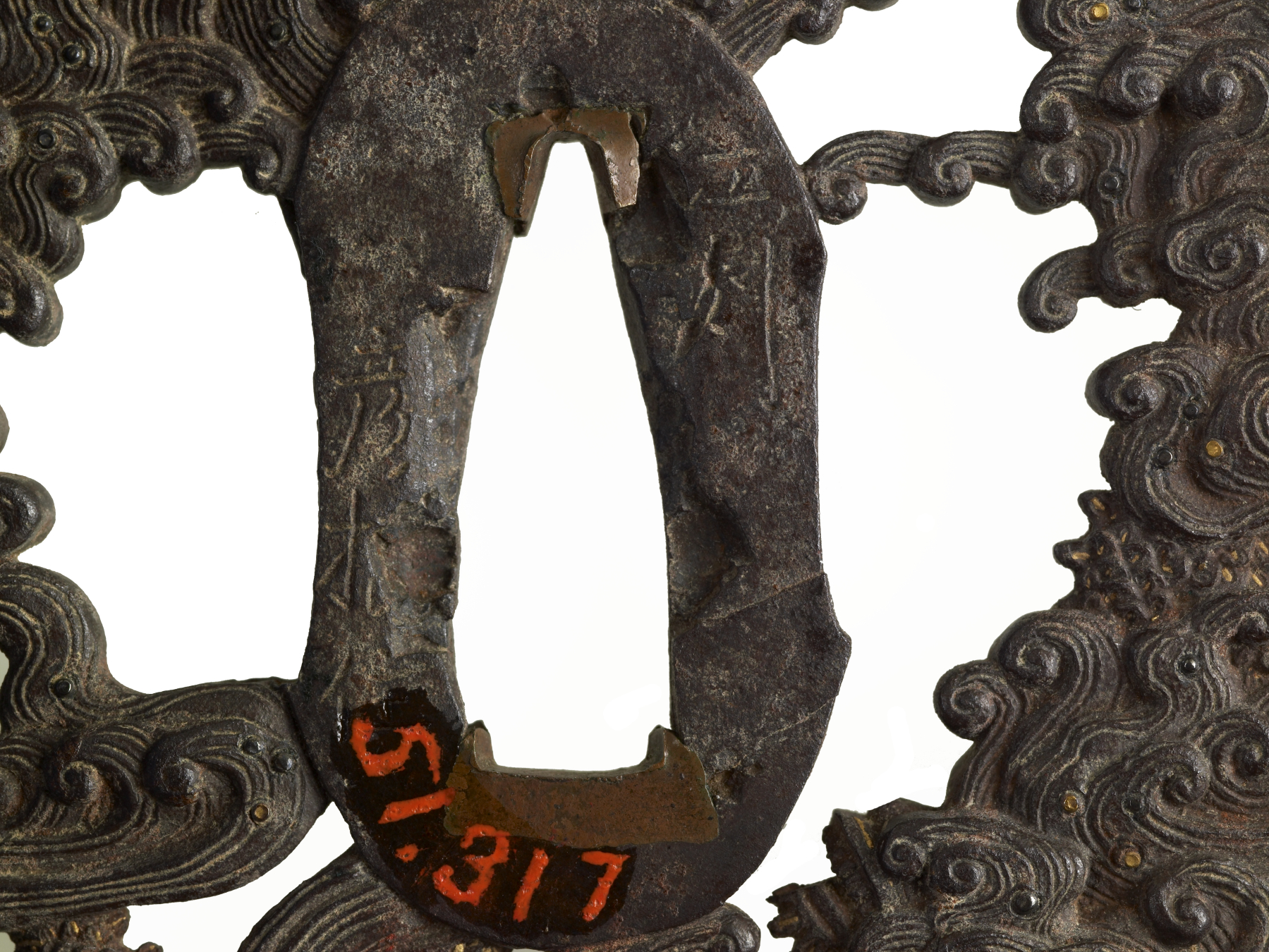Tsuba with Kamatari and the Jewel
(Japanese Military Armor)
The body of this tsuba is formed by the elements of the composition. It tells the story of Kamatari, the founder of the powerful Fujiwara family. He was a historical figure who died in 669, but this episode is from a legend. His daughter had become the empress of China and sent a boatload of treasures, including an important jewel, back to Japan to be used for a temple. The Dragon King of the sea stole the jewel and hid it in his temple. Kamatari retrieved it with the help of a diver girl, who sacrificed herself to ensure the jewel was returned to Kamatari. Kamatari is shown at the top of the tsuba in his boat just after he received the jewel. The Dragon King's body forms the lower left edge of the tsuba. Kamatari's boat and the Dragon King are connected by waves. Spaces in the waves create the openings for the hair pick and utility knife.
Inscription
Provenance
Provenance (from the French provenir, 'to come from/forth') is the chronology of the ownership, custody, or location of a historical object. Learn more about provenance at the Walters.
William T. / Henry Walters Collection, Baltimore [date and mode of acquisition unknown]; Walters Art Museum, 1931, by bequest.
Geographies
Japan, Hikone (Place of Origin)
Measurements
3 1/16 x 3 x 3/16 in. (7.74 x 7.56 x 0.5 cm)
Credit Line
Acquired by William T. or Henry Walters
Location in Museum
Not on view
Accession Number
In libraries, galleries, museums, and archives, an accession number is a unique identifier assigned to each object in the collection.
In libraries, galleries, museums, and archives, an accession number is a unique identifier assigned to each object in the collection.
51.317






